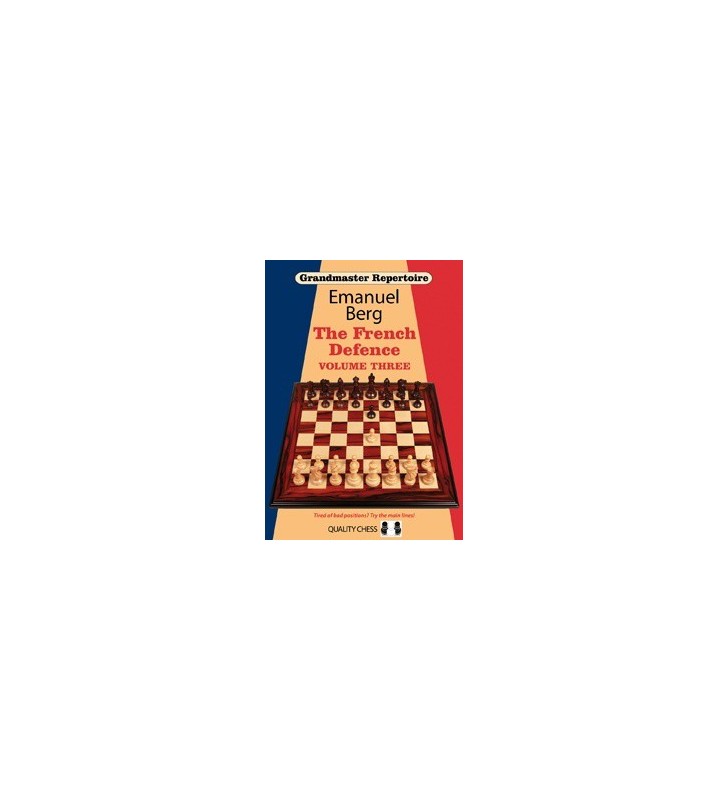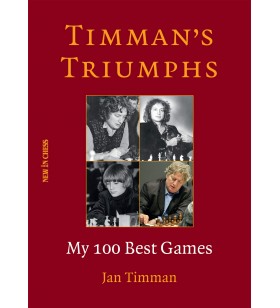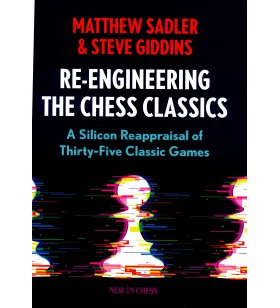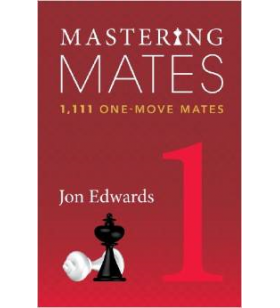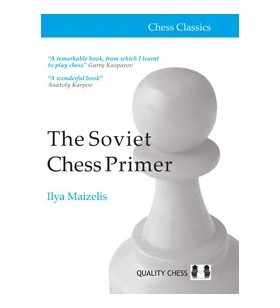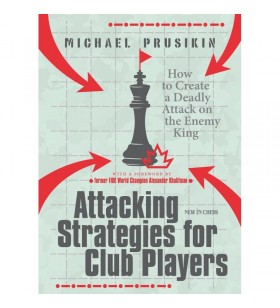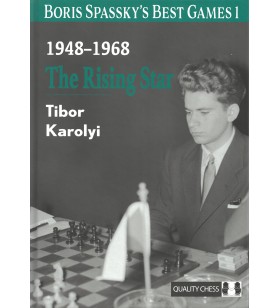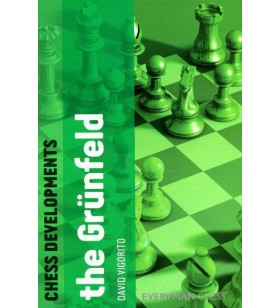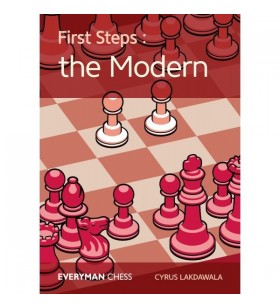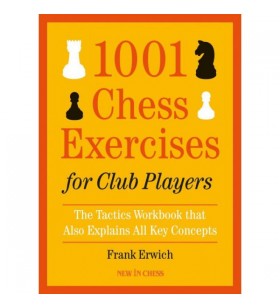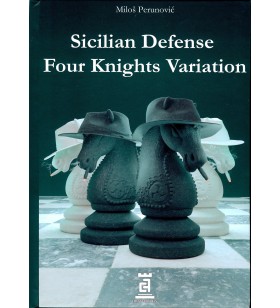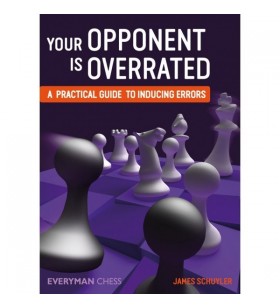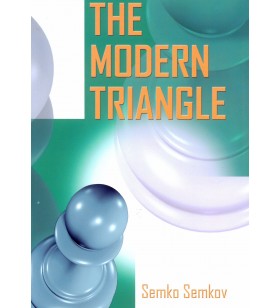- CHESS
- Chess boards and pieces
- Chess books
- Chess books in English and others
- Opening books
- The Ruy Lopez
- Other open games
- Other semi-open games
- The Sicilian
- French Defence
- Pirc & Modern Defence
- Caro-Kann
- Queen´s Gambit
- Slav Defence & Semi-Slav
- Other closed games
- Other semi-closed games
- King´s Indian Defence
- Nimzo & Queen´s Indian
- Grünfeld
- English Opening
- Dutch Defence
- Miscellaneous openings
- General and repertoire books
- Endgame books
- Books on grandmasters
- Books on tournaments
- Books in Dutch
- Miscellaneous
- Chess magazines
- General and middle game books
- Opening books
- Chess books in French language
- Chess books in English and others
- Chess software and DVDs
- Chess computers
- Equipment for clubs
- BOARD & BRAIN GAMES
- GO
- BRIDGE & CARDS & TAROT
- POKER & CASINO GAMES
- PUZZLES & BRAIN TEASERS
- DARTS
Berg - GM repertoire vol. 16 the French Defence vol.3
 Livraison sous 48 heures via Bpost*
Livraison sous 48 heures via Bpost*
Livraison gratuite à partir de €69 (Belgique, France, Pays-Bas, Luxembourg, Allemagne)
 You can cancel your order
You can cancel your order
For fourteen days!
 Secure payments
Secure payments
All payment cards accepted.
16 other product
Sadler/Giddins - Re - Engineering the chess-classic
out of print
Are you ready for new strategic insights about thirty-five of the most fascinating and complex chess games ever played by World Champions and other top grandmasters? Grandmaster Matthew Sadler and renowned chess writer Steve Giddins take a fresh look at some classic games ranging from Anderssen-Dufresne, played in 1852, to Botvinnik-Bronstein (1951) and Geller-Euwe (1953). They unleashed the collective power of Leela, Komodo and Stockfish to help us humans understand what happened in games of fan favourites such as Boris Spassky, Mikhail Tal, Bent Larsen and Bobby Fischer.
The first chess engines improved our appreciation of the classic games by pointing out the tactical mistakes in the original, contemporary game notes. But the expertise of Matthew Sadler is to uncover the positional course of a game with the help of the second generation of chess engines that emerged after 2018.
This book will change your perception of these games’ strategic and technical patterns. You will, for example, learn to appreciate and understand a classic Capablanca endgame. And a classic Petrosian exchange sacrifice. And a winning, and then losing, king-hunt endgame between Spassky and Tal. You will see how Larsen already understood the strength of the h-pawn march far before AlphaZero’s revelation. The engines offer new strategic ideas and plans that human players have yet to consider. Even the ‘the best ever anti- King’s Indian player’, Viktor Korchnoi, would be amazed by the engine’s unique ideas about White’s breakthroughs on the queenside.
The most instructive games are often those which are more strategic and technical. Using modern engines, the authors have re-engineered a wonderful collection of classic games, generating dozens of positional chess lessons that will help every club player and expert to improve their game. 440 pages
Karolyi - Boris Spassky's best game 1 (1948-1968) The Rising Star
Boris Spassky is the most underappreciated World Champion in chess history, remembered as the Soviet who lost to Bobby Fischer in 1972. In this two-volume work, biographer extraordinaire Tibor Karolyi puts the focus on Spassky’s brilliant career and life story.
Born in 1937, Spassky barely escaped with his life when evacuating from the Siege of Leningrad as a young boy. This book tells the story of how that boy subsequently learned to play chess and rose through the Soviet ranks to become the strongest player in the world in the late 1960s.
International Master Tibor Karolyi is a renowned author and trainer from Hungary. His biographical works for Quality Chess have received glowing praise from readers and reviewers.
Stap 2 : Handleiding jeugdclubtrainer
In de tweede stap begint het 'grotere' werk. Na de spelregels en de basisvaardigheden van de vorige stap staan nu de eerste beginselen van tactiek en positiespel op het programma. We leren aanvalstechnieken aan om op slimme wijze materiaal buit te maken.
Perunovic - Sicilian Defense : Four Knights Variation
The Four Knights Variation is a variation of the Sicilian Defense that most often occurs after 1.e4 c5 2.Nf3 e6 3.d4 cxd4 4.Nxd4 Nf6 5.Nc3 Nc6. It’s a good choice for all types of players – whether you’re an aggressive player who wants to attack your opponents or a more defensive player who prefers a slow and positional game, the Four Knights Variation is the right choice for you.
Learning to play the Four Knights Variation of the Sicilian Defense is not only beneficial for adding a powerful opening to your repertoire but can also improve your general chess understanding and knowledge. By studying this opening, players can learn about important concepts such as pawn structures, piece activity, and the importance of controling the center. Furthermore, the Four Knights Variation often leads to complex and tactical positions, which can help players improve their calculation skills and ability to recognize key tactical patterns on the board. All in all, mastering this opening can help players become more well-rounded chess players. 223 pages
BRONSTEIN,FURSTENBERG - L'Apprenti Sorcier
David Bronstein, qui fut l'un des talents les plus éclatants des échecs de l'après-guerre, demeure l'une des personnalités les plus atypiques qu'ait produit le système soviétique. Ce livre ne laisse rien ignorer de l'un et l'autre aspect, depuis les entretiens-confessions jusqu'aux très nombreuses parties (220 au total, dont 50 commentées en profondeur et 40 autres plus succinctement) illustrant la carrière de l'ex vice-champion du monde. Le style de Bronstein peut être résumé par une de ses phrases: « Vous n'êtes pas toujours obligé de jouer le meilleur coup. Un coup doit être actif, entreprenant, correct et beau ! ». Serait-ce la recette du bonheur échiquéen ? Pour le lecteur, sans aucun doute...

 Français
Français Nederlands
Nederlands English
English